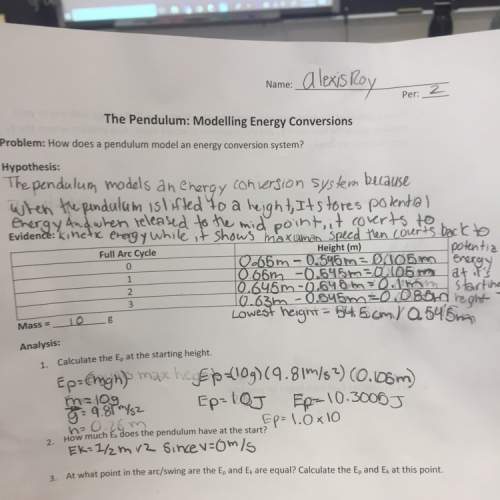
Physics, 20.03.2020 09:47 montanolumpuy
Slader You live on a planet far from ours. Based on extensive communication with a physicist on earth, you have determined that all laws of physics on your planet are the same as ours and you have adopted the same units of seconds and meters as on earth. But you suspect that the value of g, the acceleration of an object in free fall near the surface of your planet, is different from what it is on earth. To test this, you take a solid uniform cylinder and let it roll down an incline. The vertical height h of the top of the incline above the lower end of the incline can be varied. You measure the speed vcm of the center of mass of the cylinder when it reaches the bottom for various values of h. You plot v2cm (in m2/s2) versus h (in m) and find that your data lie close to a straight line with a slope of 6.42 m/s2.

Answers: 1
Another question on Physics


Physics, 22.06.2019 00:00
Which is not a characteristic of a heat pump? a. it is used in air conditioners. b. it uses a refrigerant. c. it requires no work. d. it reverses the normal flow of thermal energy.
Answers: 2

Physics, 22.06.2019 00:30
Next a skier is pulled by a tow rope up a frictionless ski slope that makes an angle of 15 with the horizontal. the rope moves parallel to the slope with a constant speed of 0.69 m/s. the force of the rope does 800 3 of work on the skier as the skier moves a distance of 8.4 m up the incline. (a) if the rope moved with a constant speed of 2.2 m/s how much work would the force of the rope do on the skier as the skler moved a distance of 8.4 m up the incline? at what rate is the force of the rope doing work on the skier when the rope moves with a speed of (b) 0.69 m/s and (c) 2.2 m/s?
Answers: 1

Physics, 22.06.2019 03:50
Three different objects, all with different masses, are initially at rest at the bottom of a set of steps. each step is of uniform height . the mass of each object is a multiple of the base mass : object 1 has mass 4..00m , object 2 has mass 1..96m , and object 3 has mass . when the objects are at the bottom of the steps, define the total gravitational potential energy of the three-object system to be zero. if the objects are then relocated as shown, what is the new total potential energy of the system? each answer requires the numerical coefficient to an algebraic expression. each algebraic expression is given using some combination of the variables , , and , where is the acceleration due to gravity. enter only the numerical coefficient. (example: if the answer is 1..23mgd , just enter 1.23)
Answers: 3
You know the right answer?
Slader You live on a planet far from ours. Based on extensive communication with a physicist on eart...
Questions


History, 28.07.2021 06:10


Mathematics, 28.07.2021 06:10


History, 28.07.2021 06:10

Mathematics, 28.07.2021 06:10



Mathematics, 28.07.2021 06:10


Chemistry, 28.07.2021 06:10




Mathematics, 28.07.2021 06:10


Social Studies, 28.07.2021 06:10


Computers and Technology, 28.07.2021 06:10




